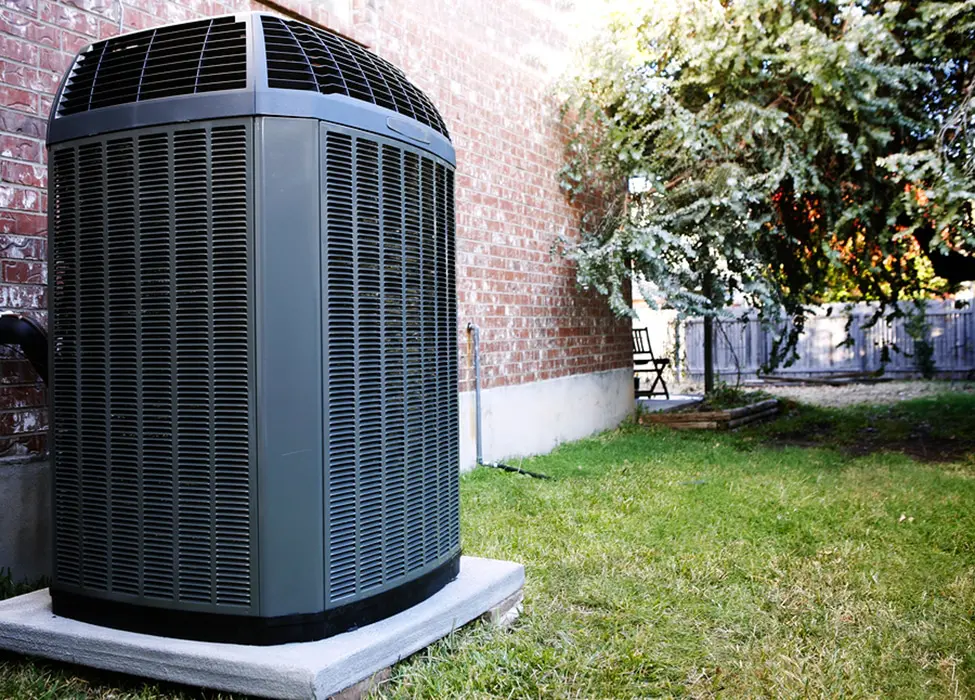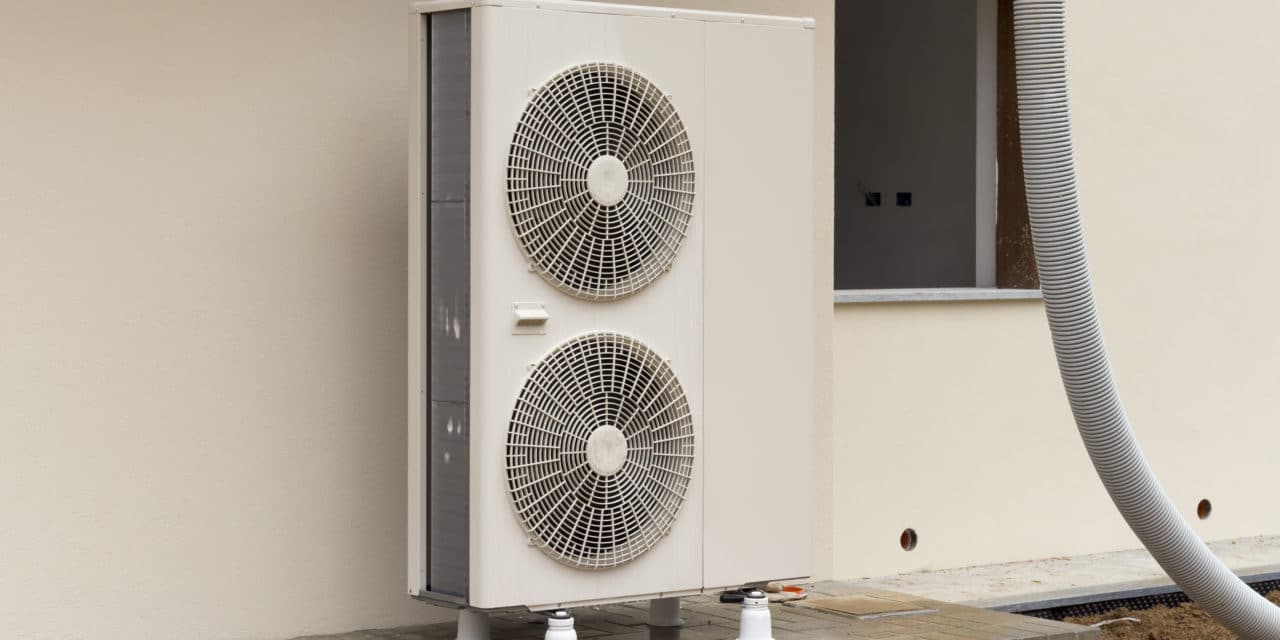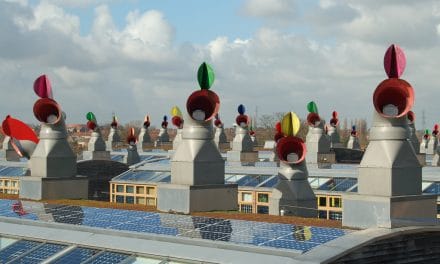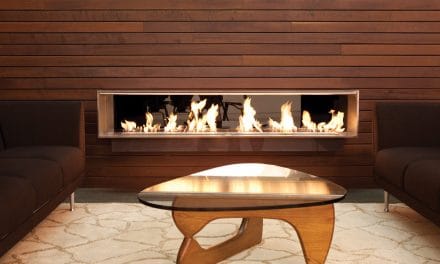What Exactly is a Heat Pump?

Listen and Learn!
This comes courtesy of our friends at Build Your House Yourself University hosted by Michelle Nelson, informal residential construction student. She shares information on home building practices as well as interviews with experienced contractors and industry experts to bring you tips, tricks, and trends in home building.
Deciding whether to choose a heat pump, or a standard heating system and air conditioner for your new home will significantly affect your family’s comfort and your utility bills. That’s why it’s so important to be an informed consumer. Today’s mini lesson will give you a good foundation for understanding heat pumps, including the commonly used air-source heat pumps, geothermal systems, and mini split systems. It’s a complex subject and you can get much more detailed information online or in books. But my goal today is to give you enough knowledge so you partner with your HVAC (heating, ventilation, and air conditioning) consultant to determine whether a heat pump is the right choice for you.
Before I go to this week’s Pro Terms, a big thank you and shout out go to KYliving. I really appreciate the awesome review you left. This is what he says “My wife and I are recently retired and we’re formulating plans for our dream house in Southern Kentucky. We listen to your podcast religiously and have absorbed so much useful information. Your podcast is our favorite as it is always clear, concise, pertinent and informative. Thanks for making our job a lot easier.”
Well KYLiving, thank you for such a sweet review and for helping me get a little closer to my goal of getting 100 5 star ratings.
Ok, let’s get to our Pro Terms for this week: Furnace and Boiler
I know you heard those terms before, but in order to understand how a heat pump is different from a furnace and a boiler, let’s define them.
A furnace is an appliance that produces warm air. Most furnaces use electricity or gas to produce that warm air. But some furnaces use wood or oil. After the furnace heats the air, it uses a blower to blow the heated air through the home’s air duct system and ultimately through vents in each room.
Unlike, furnaces, boilers uses hot water to heat your home. Boilers don’t use forced air or ductwork at all to produce or distribute heat. With a boiler, water is heated in a tank, using gas or electricity. That heated water from the tank is sent through pipes to various end points inside your home—end points like radiators, or baseboard heaters, or radiant in-floor heating systems. Heat then radiates, or extends, from the radiators or baseboards to warm the rooms.
So, in summary, both a furnace and a boiler use gas or electricity to create heat. And only heat. Furnaces and boilers do not produce cool air. A furnace produces and distributes hot air to heat a house, and a boiler produces and distributes hot water to heat your house.
Ok, let’s move on to the mini lesson.
Although you may not know exactly what a heat pump is, I bet you can figure out, based on its name, what a heat pump does. A heat pump, pumps heat, either into the house or out of the house. A heat pump is a heat transporter that pumps heat into your home in winter and pumps heat out of your home in summer.
Traditional HVAC systems use separate equipment to perform heating and cooling. Usually a furnace or boiler is combined with a separate air conditioner.
A heat pump is a combination heating and air conditioning system. It’s an all-in-one system that can both heat and cool a space, and it’s highly energy efficient.
In warmer weather, a heat pump works like a normal air conditioner. It takes heat from inside the house and transfers it to the outside.
In colder weather, the heat pump does the reverse. Surprisingly, even cold, winter outdoor air contains some heat. So, during the cold winter months, the heat pump extracts any heat from the outdoor air and sends that heat inside, to warm your house.
When the temperature falls below 30 degrees F, there’s not enough heat in the outside air to warm the house. And the heat pump must be supplemented with other types of heat.
Heat pumps use supplemental electric heat, gas, or oil to help with heating the house. Whatever type of heating system is common in your area is likely the most efficient and cost-effective backup method to use.
When a heat pump can be used in conjunction with a gas furnace it is often called a dual-fuel option. The two systems share the heating load but never function at the same time. The heat pump is the primary heating and cooling system. However, when the temperature drops below freezing, the gas furnace takes over until the outdoor temperature rises enough for the heat pump to operate more efficiently.
Heat pumps in residential construction usually consist of 2 parts: an indoor component and an outdoor component. Sometimes you may have more than one indoor component.
One of the biggest advantages of a heat pump is that it moves heat rather than burning fuel to create heat. This makes a heat pump very energy efficient, allowing for lower utility bills as compared to a standard heating and air conditioning system.
Another advantage of a heat pump over a standard HVAC system is that there’s no need to install two separate systems to heat and cool your home since the heat pump acts as both a heater and an air conditioner.
There are many types of heat pumps on the market. Today, we’ll talk about the 3 main types: Air-source heat pumps, geothermal heat pumps, and mini split systems. I’ll also quickly mention a few more specialized options that you can do more research on if you like.
Alright, let’s start with air source heat pumps.
Most heat pumps used for new homes are air-source heat pumps. Air-source heat pumps transfer heat to and from the air. Depending on the climate, air-source heat pumps are about 1.5 to 3 times more efficient than electric heating alone. Many air source heat pumps use duct systems to deliver warm and cool air.
Air-source systems are easy to access for service and repairs, which is good because they need regular maintenance since the outdoor component is exposed to outside elements. An air source heat pump should be examined by a professional every year or two.
Ground-source systems are another type of heat pump. Ground source heat pumps are also known as geothermal systems. I never knew that a geothermal system was a heat pump!
Geothermal heat pumps transfer heat to and from the ground, or to and from an underground body of water, like a lake or pond. Here’s how geothermal systems work…
A series of fluid filled pipes is put underground, or beneath the water in a pond or lake. The series of pipes is called a loop. The loop is put few feet under the ground where year round the soil or water remains at a constant 50 to 60 degrees Fahrenheit (10-15 degrees Celsius). The geothermal loop takes advantage of that constant temperature.
In the winter, the heat from the ground is transferred to the loop, and the heat in the loop is then sent to warm the house. Since the earth’s temperature stays constant year round, no supplemental heat is needed with a geothermal system. In the summer, the process is reversed. The geothermal system draws heat away from the house and carries that heat to the ground, or water outside.
The two main advantages of geothermal systems are that they are super energy efficient and they incur less wear and tear than other systems since they are buried underground, protected from outdoor elements.
The main downside of geothermal systems is that they’re expensive. But according to energy.gov, “Even though the installation price of a geothermal system can be several times that of an air-source system of the same heating and cooling capacity, the additional costs are returned to you in energy savings in 5 to 10 years. System life is estimated at 25 years for the inside components and 50+ years for the ground loop. There are approximately 50,000 geothermal heat pumps installed in the United States each year”
Geothermal systems are best for larger homes, over about 3500 square feet. The larger the home, the greater your potential energy savings, and the faster you can recoup your investment in a geothermal system. Another downside is that geothermal systems are challenging and costly to repair since they are underground.
The last type of heat pump that we’ll talk about today is a mini-split heat pump. Mini split heat pumps transfer heat to and from the air, like an air-source heat pump. But mini split systems combine one outdoor air-source unit with multiple indoor units. Air ducts are not needed for mini-split heat pumps.
The term “mini” is used to describe the small indoor units located in each room or zone. Those indoor mini units are usually mounted to the wall.
Since mini split heat pumps do not rely on potentially leaky ductwork, they are very energy efficient. Mini splits allow you to control each zone or room separately, further increasing energy efficiency.
You can use mini split heat pump systems as the primary heating and cooling system for your entire house, or in combination with other systems. Adding a mini split unit might be a good choice for garage apartments, bonus rooms, home gyms and sunrooms, so you can adequately heat and cool those spaces, without stealing air from other rooms.
Mini splits can also work well in man caves where cigar smoking will be going on. Since there is no ductwork needed for the system, the cigar smoke won’t be able to travel to the other parts of the house.
If your family is constantly fighting over how to set the thermostat, consider a mini split system. The mini split heat pump is ideal for creating independent temperature zones in different rooms. Although you could install a traditional ducted HVAC system with different zones, the mini split system might be more efficient.
You might also put in a mini split system in areas that need extra cooling or heating. For example, if you have a room with southwest facing windows, or a large wall of windows that will likely be hotter than the rest of the house, consider a mini split heat pump.
Ductless mini-split heat pump systems are also useful if you want to add a heat pump to an existing house because you have quite a bit of flexibility in where mini split units are placed.
Most heat pumps work best in moderate climates. Standard units are not the best choice in areas that experience extreme heat and cold. The are types of heat pumps that work well in very cold temperatures are Reverse cycle chiller (RCC) heat pumps, cold climate heat pumps, and all climate heat pumps. Geothermal systems also work well in very cold climates.
Some people complain that the heat produced by heat pumps isn’t as intense as the heat produced by furnaces. People who are used to traditional furnaces can be uncomfortable with the milder heat produced by heat pumps. Other people prefer the milder, evenly distributed warmth. In contrast to furnaces, heat pumps eliminate cold spots and they also turn on and off less frequently than a standard gas furnace.
The efficiency of heat pumps is expressed in 2 ways, with a SEER rating and a HSPF rating. SEER stands for seasonal energy efficiency rating, and HSPF stands for heating seasonal performance factor. You don’t have to remember what those stand for. What’s important to know is the higher the SEER and HSPF ratings, the more efficient the units.
More efficient heat pumps, as you might imagine, are more expensive. But even though you’ll spend more up front for more efficient heat pumps, you’ll make up for the initial expense with money saved on utility bills throughout the life of the system. You should be able to recoup the cost of most non-geothermal heat pumps in just a few years.
One of the main reasons many homeowners and HVAC consultants would rather install a separate air conditioner and furnace, instead of a heat pump is that, in some areas, selecting the right size heat pump can be a challenge. This is especially true where there are extreme variations between summer and winter temperatures. It’s generally easier to select the right size furnace for heating, and then the right size air conditioner for cooling. Selecting your heating and cooling systems independently takes less expertise that selecting a properly sized heat pump.
If you really like the idea of a heat pump, but live in an area where winters routinely drop below freezing and summers are hot and/or humid, you might look into a multi-stage heat pump. Multi-stage heat pumps allow for different levels of heating and cooling, depending on the need. These systems are highly efficient, and they automatically adjust to the appropriate level of heating or cooling.
Well, that’s it for this week. I hope you understand heat pumps a little better. If you know someone who would benefit from this lesson, you can share it with them. Simply tap the 3 small dots on the right side of the podcast player.
Ok, let’s see how you do on this week’s quiz.
QUIZ:
-
True or False. A boiler uses hot water to heat your house and a furnace uses hot air to heat your house.
That’s true. Boilers and furnaces use energy to create heat. They’re used in conjunction with an air conditioner in standard HVAC systems. In contrast, a heat pump, all by itself, can heat and cool your house.
-
Which of the following are examples of heat pumps?
- Air-source systems
- Mini split systems
- Geothermal systems
- All of the above
The answer is D, all of the above. All heat pump systems pump heat into, or out of the house. They simply transfer heat, they do not create heat.
Air-source heat pumps transfer heat to and from the air. Mini split systems also transfer heat to and from the air. But mini split heat pumps don’t use air ducts to deliver heat and cool air. Instead, mini split systems use small indoor wall mounted units to deliver heat and cool air. Geothermal systems are also called ground source heat pumps and they transfer heat to and from the ground or from underground water.
Please remember that the purpose of this podcast is simply to educate and inform. It is not a substitute for professional advice. The information that you hear is based the only on the opinions, research, and experiences of my guests and myself. That information might be incomplete, it’s subject to change and it may not apply to your project. In addition, building codes and requirements vary from region to region, so always consult a professional about specific recommendations for your home.
Thanks for spending part of your day with me. I hope you learned as much as I did. Let’s do it again next week. Come back and join me for another episode of BYHYU, Build Your House Yourself University.








